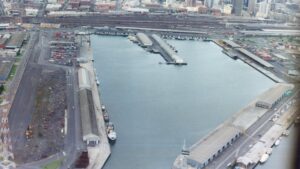
The ExoMars mission has reached a significant milestone as the most complex parachute system ever designed for Mars successfully completed a high-altitude drop test on Earth. Conducted on July 7, 2025, at the Esrange Space Center in Kiruna, northern Sweden, the test involved a stratospheric helium balloon lifting a mock-up landing platform to nearly 30 km above the Arctic Circle, where two large parachutes were deployed.
The European Space Agency (ESA) engineer, Luca Ferracina, expressed confidence in the system, stating,
“We are happy to confirm that we have a parachute design that can work on Mars – an ambitious system with the largest parachute ever to be flown outside Earth.”
Testing Mars Landings on Earth
To simulate the conditions of Mars’ thin atmosphere, which is about 1% of Earth’s density at sea level, the test required the balloon to reach an altitude of 29 km, nearly three times higher than commercial aircraft fly. The dummy capsule experienced a free-fall for about 20 seconds, reaching near-supersonic speeds before the parachutes were deployed.
Luca Ferracina explained the importance of this testing, noting,
“The combination of velocity and low atmospheric density in this test is exactly the same as what the parachutes will experience on Mars. Testing on Earth is a way to gain confidence and confirm that all the elements perform as expected.”
The Esrange Space Center, with its long history of stratospheric balloon missions, provided the ideal environment for such a complex operation, requiring precise logistics and favorable weather conditions.
Innovative Parachute Design
Landing on Mars is notoriously challenging, with the descent module needing to decelerate from 21,000 km/h to a gentle touchdown in just six minutes. This mission aims to deliver the Rosalind Franklin rover safely to the Martian surface for exploration.
The parachute system, designed by UK-based Vorticity, includes two main parachutes, each with a pilot chute for extraction, and a retro-rocket propulsion system activated 20 seconds before landing. John Underwood, Vorticity’s principal engineer, highlighted the efficiency of the dual-parachute approach, stating,
“Using two parachutes allows us to design a strong, medium-sized parachute to decelerate the probe through supersonic speeds and then a much larger, lightweight parachute for the final descent.”
Parachute Specifications
The first stage parachute, measuring 15 meters in diameter, draws inspiration from the parachutes used in NASA’s Viking Mars missions in the 1970s. The second stage parachute, at 35 meters wide, is the largest ever designed for deployment on Mars, crafted from over 800 square meters of fabric and more than four kilometers of suspension lines. Its meticulous folding process is crucial for successful deployment.
Challenges and Future Prospects
The parachute system, initially qualified for a 2021 Mars mission, faced delays due to geopolitical tensions, specifically Russia’s invasion of Ukraine. The current campaign aims to verify the parachutes’ performance after extended storage.
With components sourced from across Europe, including the Netherlands, Italy, and Czechia, the project underscores Europe’s expertise in space technology. Thales Alenia Space in France supervised the test campaign, ensuring the assembly system’s integrity.
John Underwood emphasized the advantages of Earth-based testing, stating,
“Testing on Earth has the advantage that we can obtain much more data and recover the parachutes for inspection after the test.”
The data collected will be analyzed alongside high-speed video footage to refine deceleration profiles and inflation models.
As the ExoMars mission progresses, the successful parachute test marks a crucial step towards ensuring the safe delivery of scientific payloads to Mars, paving the way for future exploration and discovery on the Red Planet.







